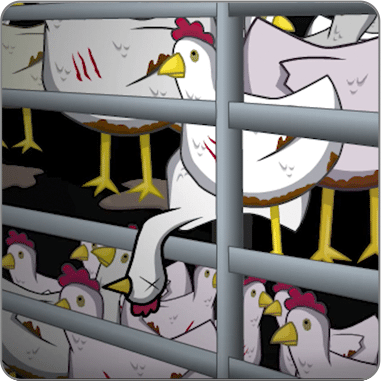
Clean
“I feel more confident than ever that the power to save the planet rests with the individual consumer.”
~ Denis Hayes, Founder of the Earth Day Network, Coordinator of the first Earth Day in 1970
Like the products you use on your body and the food you eat, conventional cleaning products are laden with unhealthy chemicals. Cleaning may not be fun, but it’s even worse when the ingredients in your products leave harmful chemical residue in place of dirt and grime. If you want a truly clean space, it’s time to green your cleaning routine.
Conventional cleaning products include a plethora of chemicals that harm the environment. VOCs (Volatile Organic Compounds), like ammonia, evaporate and contribute to indoor air pollution, as well as outdoor smog. When we wash ingredients like nitrogen and phosphorous down the drain, they flood waterways with unregulated levels of chemical nutrients, which cause unnatural plant growth, deplete the oxygen in the water supply, kill fish, and lead to birth defects in aquatic wildlife.
When companies are transparent about ingredients and business practices, you can clean with confidence while protecting human and environmental health. In fact, the Environmental Working Group (EWG) has an entire database of information about these companies and products.
Green
Think
Unfortunately, there is no transparency in the cleaning product industry! Companies are not required to list ingredients on labels, so we wind up exposing ourselves to largely undisclosed toxins.
Challenge
Want to learn how to decode labels? EWG has you covered!
- Brush up with EWG’s Guide to Healthy Cleaning
- What are three key pieces of information that you learned from looking through this resource that will help you choose healthier cleaning products in the future?
- Share two facts about conventional cleaning products that surprised you + let us know @TurningGreenOrg using #ConventionalToConscious
Greener
Think
More than 80,000 chemicals are unregulated by the federal government, including most of those in common household cleaning products. Chances are that your conventional cleaning products contain substances which, when inhaled or absorbed through the skin, cause serious health problems.
Challenge
- Gather all of the cleaning and laundry products in your home
- Focus on one conventional cleaning product and take a closer look at its ingredients and retail price.
- Search the product on EWG’s Guide to Healthy Cleaning and use the “label decoder” to define the ingredients.
- What is the product rating?
- What are the adverse health impacts with the product?
- Will you consider making the switch and would you recommend it to your friends? Why or why not?
Greenest
Think
Bathrooms get grimy quickly, especially when shared with roommates or even a whole dorm floor. Using safe cleaning products is especially important in spaces that need to be cleaned often.
Challenge
- Find a recipe online for a simple multipurpose cleaner, or a cleaner meant for toilets, sinks and showers. Check out Women’s Voices for the Earth or Lisa Bronner’s blog for ideas.
- Purchase or borrow the ingredients you need. You can reuse a spray bottle or other container, and find a zero waste option for scrubbing or application.
- Go ahead and make your new cleaner.
- Use it to clean your bathroom or other space. How does it compare?
- Let us know @TurningGreenOrg using #ConventionalToConscious


